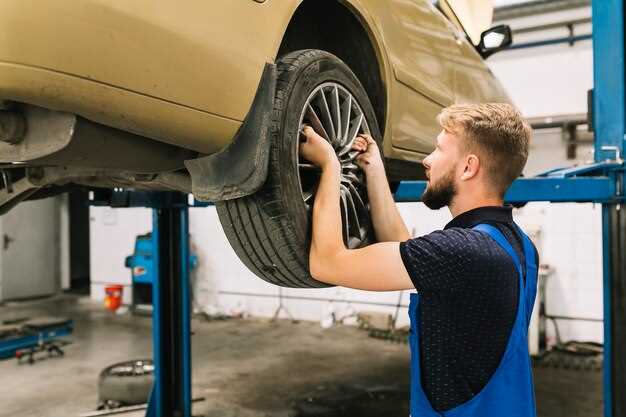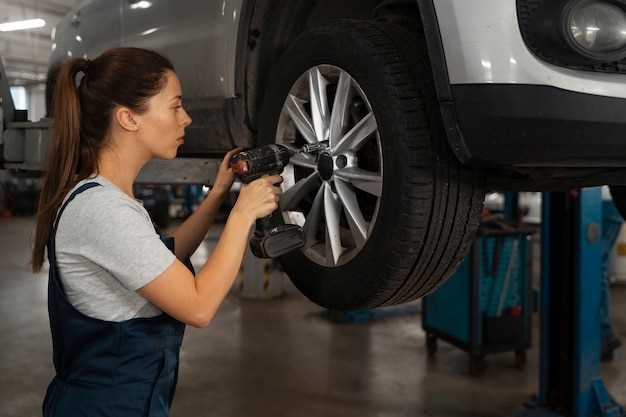

Maintaining optimal wheel alignment is crucial for the longevity and performance of your vehicle. Misaligned wheels can lead to uneven tire wear, reduced fuel efficiency, and compromised handling. Understanding the importance of proper alignment is the first step towards achieving a smoother driving experience.
In this DIY guide, we will walk you through the essential steps to ensure your vehicle’s wheels are properly aligned. Whether you’re a seasoned automotive enthusiast or a beginner looking to save on maintenance costs, following these guidelines will enable you to identify alignment issues and make necessary adjustments.
By applying these outlined steps, you’ll not only enhance your vehicle’s performance but also extend the lifespan of your tires, ultimately leading to a safer and more efficient ride. Get ready to take charge of your wheel alignment and enjoy the benefits of a well-maintained vehicle.
Understanding the Signs of Misalignment

Proper wheel alignment is essential for optimal vehicle performance and safety. When your wheels are misaligned, several warning signs may indicate the need for adjustment. Recognizing these signs early can save you from costly repairs and ensure a smooth ride.
1. Uneven Tire Wear: One of the most common signs of misalignment is uneven tire wear. If you notice that one side of your tires is wearing down faster than the other, it’s a clear indication that your wheels may be out of alignment. Regularly checking your tires can help you catch this issue early and implement diy solutions if necessary.
2. Pulling to One Side: If your vehicle pulls to the left or right while driving on a straight road, this could signal an alignment problem. The issue often becomes more pronounced at higher speeds. To test for this, briefly let go of the steering wheel on a flat, straight surface and observe if the car drifts.
3. Steering Wheel Off-Center: When your steering wheel is not centered while driving straight, it’s a good indication of misalignment. Ideally, your steering wheel should be perfectly straight when the wheels are aligned. If you find yourself holding the wheel at an angle to keep the vehicle straight, it might be time for an alignment check.
4. Vibration in the Steering Wheel: If you experience excessive vibration in the steering wheel, it could be related to misalignment. Although this can also indicate other issues such as tire balance problems, it’s crucial to address the alignment to avoid further complications.
5. Poor Fuel Efficiency: Misalignment can cause your vehicle to work harder, leading to lower fuel efficiency. If you find yourself refueling more often without any other apparent reason, consider checking your wheel alignment as part of your tips for improving fuel economy.
By being vigilant and recognizing these signs, you can take action promptly to address wheel misalignment. Regular inspections and understanding these symptoms can enhance the lifespan of your tires and ensure safe travels.
Tools Needed for DIY Wheel Alignment

When embarking on a DIY wheel alignment project, having the right tools is essential for achieving accurate results. Here’s a comprehensive list of tools you will need:
1. Alignment Tool: A basic alignment tool or kit is crucial for measuring wheel angles. These tools typically include gauges that help you adjust camber, caster, and toe settings efficiently.
2. Tape Measure: A durable tape measure allows you to take precise measurements between tire tread and suspension components. This is vital for checking toe alignment between the front and rear wheels.
3. Level: A bubble level helps ensure that your vehicle is parked on a flat surface. Proper leveling is necessary for accurate assessment of alignment angles.
4. Jack and Jack Stands: A hydraulic jack is essential for lifting the vehicle safely, while jack stands provide support once the car is elevated. This is particularly important when inspecting suspension components and making adjustments.
5. Wrenches and Sockets: A set of wrenches and sockets will allow you to loosen and tighten bolts on the suspension and steering components. Ensure you have the right sizes for your specific vehicle model.
6. Aligning Bars or String Method: If you are looking for a budget-friendly approach, consider using straight aligning bars or a string method. These can aid in achieving a straight reference line to ensure accurate toe alignment.
7. Camber Gauge: A camber gauge is used to precisely measure the camber angle of the wheels. This tool is especially useful for fine-tuning adjustments and ensuring optimal tire contact with the road.
8. Safety Goggles and Gloves: Personal safety should always be a priority. Safety goggles protect your eyes, and gloves keep your hands safe from sharp edges or hot components during the process.
By having these tools on hand, you can follow the tips for DIY wheel alignment effectively, ensuring your vehicle performs optimally and extends the lifespan of your tires.
Step-by-Step Process for Achieving Accurate Alignment
Achieving accurate wheel alignment is crucial for the longevity of your vehicle and optimal driving performance. Follow these DIY steps to ensure your wheels are aligned properly.
Step 1: Gather the Necessary Equipment
Before starting, collect the tools you’ll need, such as a tape measure, a level, a jack, jack stands, and adjustable wrenches. You may also require a wheel alignment tool or a string to measure alignment angles accurately.
Step 2: Prepare the Vehicle
Park your vehicle on a flat, level surface. Ensure that your tires are properly inflated to the recommended pressure. Remove any weight from the vehicle to achieve an accurate alignment.
Step 3: Measure the Toe Angle
Using the tape measure or alignment tool, measure the distance between the front and rear edges of the front tires. This will help you determine the toe angle. Ideally, the front of the tires should be slightly closer than the rear, contributing to a proper toe angle.
Step 4: Check Camber Angle
To assess the camber angle, use a level to check the vertical alignment of each wheel. Measure the angle against a plumb line; any deviations indicate an incorrect camber that needs adjustments.
Step 5: Evaluate the Caster Angle
Although more complex to measure, the caster angle can also be checked using a camber gauge or professional alignment tool. Ensure the steering axis tilts towards the rear for stability and control. Adjust accordingly if necessary.
Step 6: Adjust the Angles
Using your tools, make adjustments to the tie rods and control arms based on the measurements taken. Make small changes and re-measure often. Precision is key to achieving the ideal alignment.
Step 7: Final Verification
Once adjustments are made, recheck all measurements for toe, camber, and caster angles. Ensure all values are within the manufacturer’s specifications. A final test drive can also help identify any residual alignment issues.
Step 8: Routine Maintenance
Periodically check your wheel alignment as part of regular vehicle maintenance. Keeping an eye on tire wear patterns can also provide insights into alignment issues, allowing for timely corrections.






